I love waking up to something pretty in the garden. The lovely Daylily below is called ‘Pretty Woman.’ Isn’t she pretty? It’s one of my favorite Daylilies followed by ‘Strawberry Candy.’
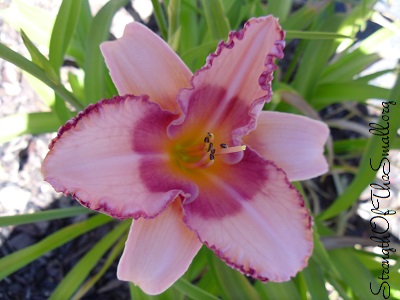
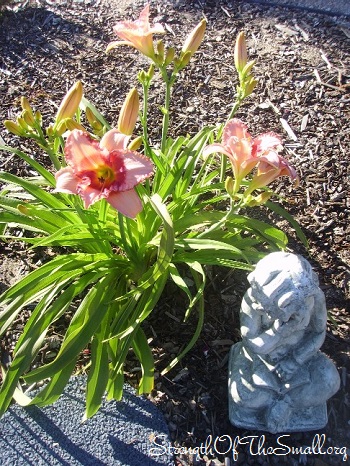
Happy Gardening!
Finding Contentment in Every Situation
Finding Contentment in Every Situation
I love waking up to something pretty in the garden. The lovely Daylily below is called ‘Pretty Woman.’ Isn’t she pretty? It’s one of my favorite Daylilies followed by ‘Strawberry Candy.’


Happy Gardening!
Today I am sharing a picture of some Allium Drumsticks growing in my backyard.
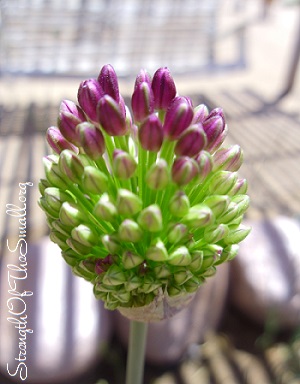
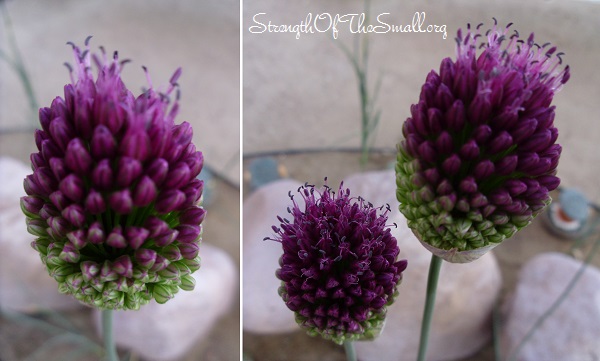
Wishing you all a wonderful day and a blessed Father’s Day weekend with your loved ones.
With Summer rapidly approaching and all the gardening projects almost complete, we were faced with one question: to cut down the Pine Tree or let it be? It stands tall between the deck area and the carport, providing some shade to these areas. However, the amount of pine needles falling from this tree alone is overwhelming. It requires high maintenance and constant clean up as the needles fall year-round. These trees are quite messy, the pine needles are always falling and piling up in the backyard. When the weather is good, clean up is easy and when the weather is erratic (with high winds lasting up to a week), clean up becomes quite painful as they get everywhere. Now I understand why some people allow trash to pile in their yard. It’s hard work, it’s endless and those needles are dangerous. Have you ever been poked by a pine needle?
After much considerations (six years of deciding the fate of the Tree), we cut approximately one-third of its branches a week and a half ago. Yesterday, with the help of our handy neighbor and his tools, we were able to cut down the Tree. We’ve been poked so much by the needles and covered in sap. It was worth the pain and we have no regrets. We’ve opened up the area and best of all, no more pine needles to deal with.
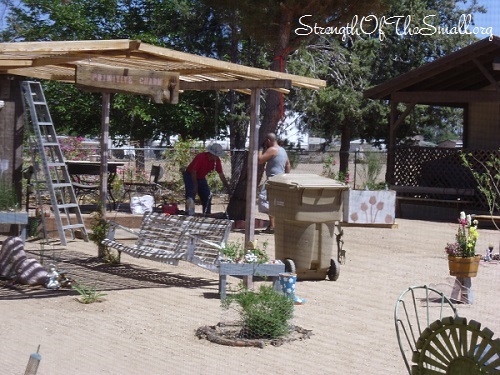
I love conifers and I prefer Fir Trees (Fraser Fir, Balsam Fir, Silver Fir, Spanish Fir and Korean Fir amongst my favorites). Pine Trees are gorgeous, especially when planted in groups or lined up and I love decorating my garden with pine cones. Unfortunately, my Pine Tree did not produce cones and it was growing at a slant. The Tree simply didn’t meet our needs and we needed the space, which is the perfect location for an upcoming project.
Pine Needles Uses:
Health Benefits
According to Wikipedia, Some species have large seeds, called pine nuts, that are harvested and sold for cooking and baking. The soft, moist, white inner bark (cambium) found clinging to the woody outer bark is edible and very high in vitamins A and C. It can be eaten raw in slices as a snack or dried and ground up into a powder for use as an ersatz flour or thickener in stews, soups, and other foods, such as bark bread. A tea made by steeping young, green pine needles in boiling water is high in vitamins A and C. More information here.
Learn How to Make Pine Needle Tea. Click here to learn about the right Pine Needle to choose. Yew, Norfolk Island Pine and Ponderosa Pines are poisonous.
I had planned on tending to my plants today, but my attention got drawn to one particular Squirrel.
From my bedroom window, I caught the squirrel on the first picture (left) climbing on the planter and eating some of the Clarkia Amoena. As I ran outside to chase it off, it ran straight to its burrow, which is located at the next door neighbor’s backyard. When we built the Primitive 3 Legged Plant Stand early this year to raise it from the ground and prevent the Rabbits from eating the plants, I didn’t foresee Squirrels in the big picture. Just a few minutes later, I spotted the same squirrel next to our storage shed, wondering if it was safe to get into the basement, after damaging some of my Horsetail plants (picture on the right).
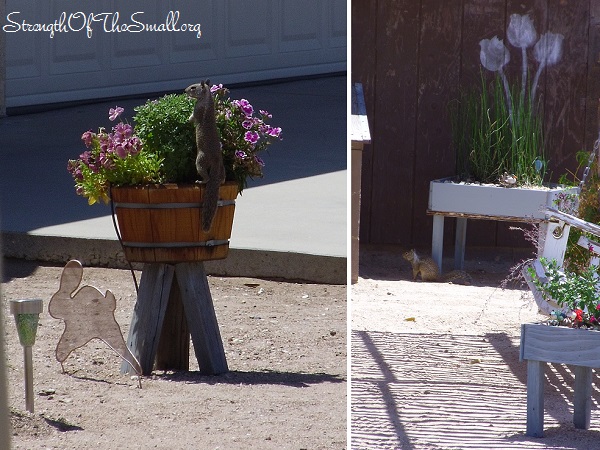
Either this Squirrel is starving or it just loves coming into our property. On the picture below (left), it found a nut somewhere in the backyard and it’s busy eating it. From he picture on the right, it’s just relaxing in the front yard underneath the Raywood Ash Tree. Life must be good or something for this little creature.
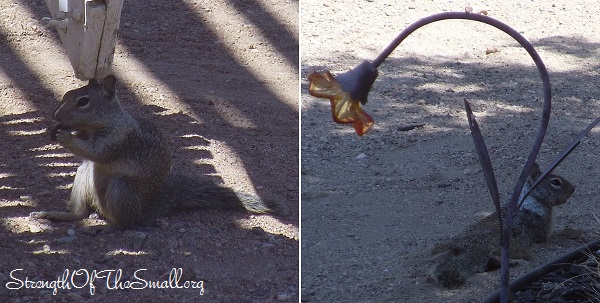
As I went to close the gate leading to the backyard, I spotted the little creature underneath the Sweet Almond Tree, enjoying a few Almonds. This Squirrel is fearless. I can’t believe how close I got to it before it ran off.
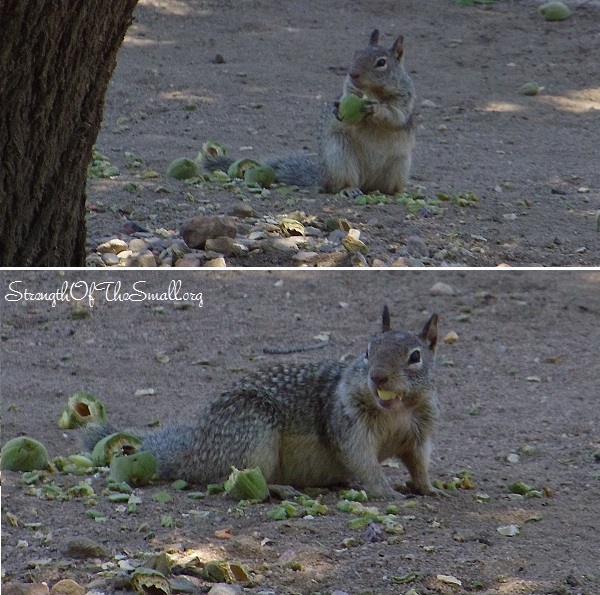
I guess after eating so many Almonds, it’s time to take a break and relax. Prior to that, it damaged and ravaged most of the plants in search of my Tulip and Crocus bulbs, seeds and digging up new sprouts. There was nothing funny about watching this varmint go through my garden the way it did. All the money spent on the plants and the energy spent in getting everything looking the way I wanted seemed to have vanished in an instant. I will be using an underground bulb cage for my next Fall bulb planting (click here for a tutorial in building yours).
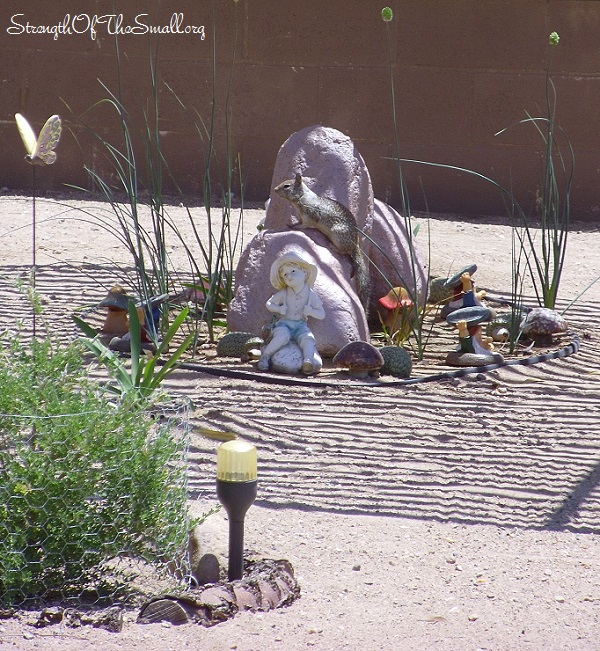
So far, all attempts to get these Squirrels from our property have failed. For one we are thinking about removing all the Oleanders along the chain link fence in the backyard and installing wood fencing or Slats (none of these will prevent them from coming over; but it might slow them down as they will have to work harder).
For now, we set up a trap in one of their favorite locations. If it works, I will share the information with those of you dealing with sneaky Squirrels as well as other rodents in your yards.
As the weather gets warmer (hotter, for those of us living in the High Desert), every one scrambles to the stores to stock up on cool drinks, snacks and others items to stay at home. The same scenario applies to animals as they search for their stores of stashed seeds, nuts and whatever they can find. I have seen Squirrels running in my neighbors backyard and just a couple ran across ours to get to the other side. There are just too many of them this year and they are starting to dig around. From the single squirrel I’ve seen on our property, they are now two.
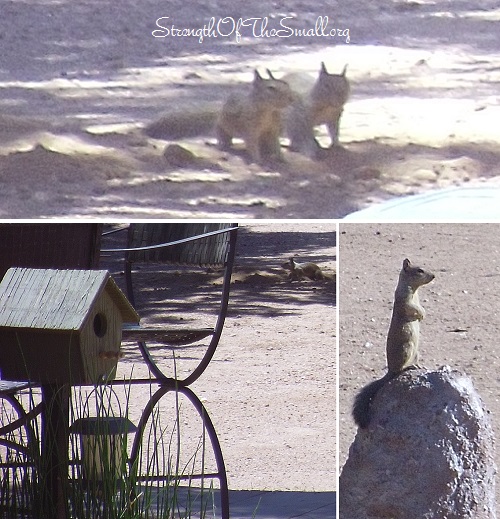
This morning, I found a bunch of holes in my children’s raised garden beds. I was saddened to see some of the Gladiolus bulbs pulled out, lying on the ground, partially eaten and the stems cut off. We had stunning Gladiolus blooms (Fiorentina, Pears, Star, Yellow and Orange) the last couple of years and I can’t say the same for this year. We have two more larger raised garden beds (not pictured) next to the ones below. One of which has Pink Tulips bulbs and the other Onions; both sustained damages as well.
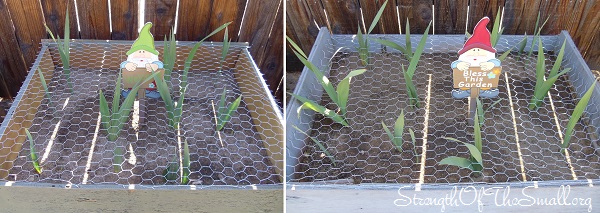
To give me some peace of mind and to prevent further damages until we find a permanent solution, my husband decided to wrap some chicken wire around the top of the garden beds.
How Can You Fight Back?
The first two options are the best as a hungry squirrel will take high risks to get to its food source.